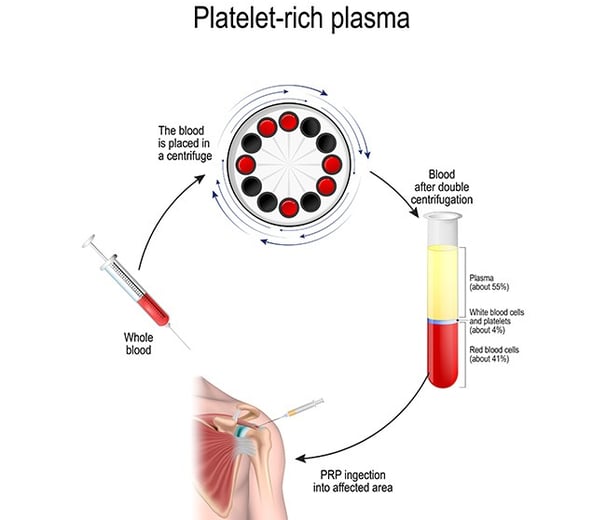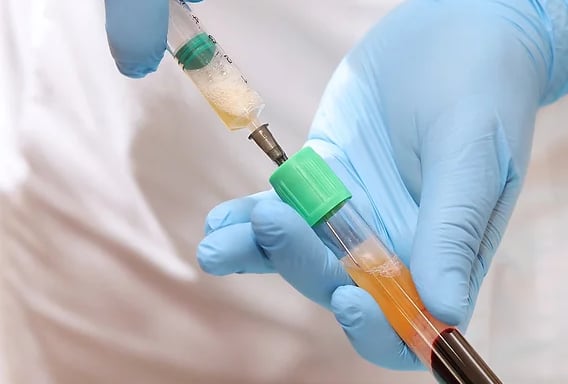
Platelet-rich plasma (PRP) Therapy
PRP Therapy Explained
Platelet-rich plasma therapy revolves around replacing, regenerating, and restoring human cells and tissues to ensure normal functioning. It is based on regenerative medicine, meaning the surgeon makes minimal incisions that lead to no pain. This makes PRP an excellent alternative to surgical procedures. PRP focuses on increasing the platelet content in the injured area through an injection. These are the healing components of our body, which instantly form new tissues, release 10 critical growth factors, and produce a web-like scaffolding called fibrin to start the healing process.


What Can PRP Treat?
PRP primarily targets musculoskeletal injuries related to joints, muscles, and tendons. These include tendinitis, arthritis, osteoarthritis, torn meniscus, disc herniation, and several pain disorders. All these conditions show great improvement with platelet-rich plasma injections. PRP can also treat nerve injuries, including sciatica, carpal tunnel syndrome, and other nerve inflammatory conditions. The procedure stimulates nerve repair and minimizes painful sensations to provide instant relief. PRP also shows amazing results for cosmetic treatments like androgenic alopecia and plastic surgery procedures, such as facelifts, wrinkle reduction, and skin tightening.


